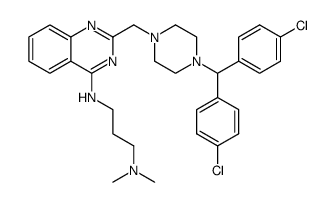| In Vitro |
SCH529074 (2-4 µM; 24 hours) causes significant reduction in cell viability, it causes a significant decreasing to 20-25% in p53 mutant cells (H157, H1975 and H322) and to 68% in the p53 WT cell line A549 at 4 µM[1]. SCH 529074 (2 and 4 µM) induces NSCLC cells (H157, A549, HCT116 and HCT116 p53-/-) arrested at the G0/G1 phase (59%; 72%; 66%; and 57%) compared with the control cells following low concentration (2 µM) of treatment[1]. SCH 529074 (2-4 µM; 24 hours) induces the early and late apoptotic rates at 2 µM in H1975 cells. In H157 cells, SCH 529074 treatment induces early and late apoptosis. Similarly, in A549 cells, 2 and 4 µM of SCH 529074 significantly increased early and late apoptosis. In line with that, in colon cancer cells, in HCT116 cells, 4 µM of SCH 529074 causes a significant induction of early and late apoptosis, and 4 µM of SCH 529074 significantly induces early apoptosis in HCT116 p53-/- cells[1]. SCH 529074 (2-6 µM; 24 hours) increases the protein levels of PUMA and p21 revealed to 4 or 6 µM in the cancer cell lines regardless of their p53 status[1]. Cell Viability Assay[1] Cell Line: p53 mutant cells (H157, H1975 and H322) and p53 WT cell line A549 Concentration: 2 µM; 4 µM Incubation Time: 24 hours Result: Inhibited cancer WT and mutant cell viability. Cell Cycle Analysis[1] Cell Line: H1975, H157, A549, HCT116, HCT116 p53-/- cells Concentration: 2 µM, 4 µM, 6 µM Incubation Time: 24 hours Result: Induced apoptosis in all assessed NSCLC cell lines irrespective of their p53 mutational status. Western Blot Analysis[1] Cell Line: H1975, H322, H157, A549, HCT116, HCT116 p53-/- Concentration: 2 µM, 4 µM, 6 µM Incubation Time: 24 hours Result: Increased PUMA and p21 protein expression.
|
